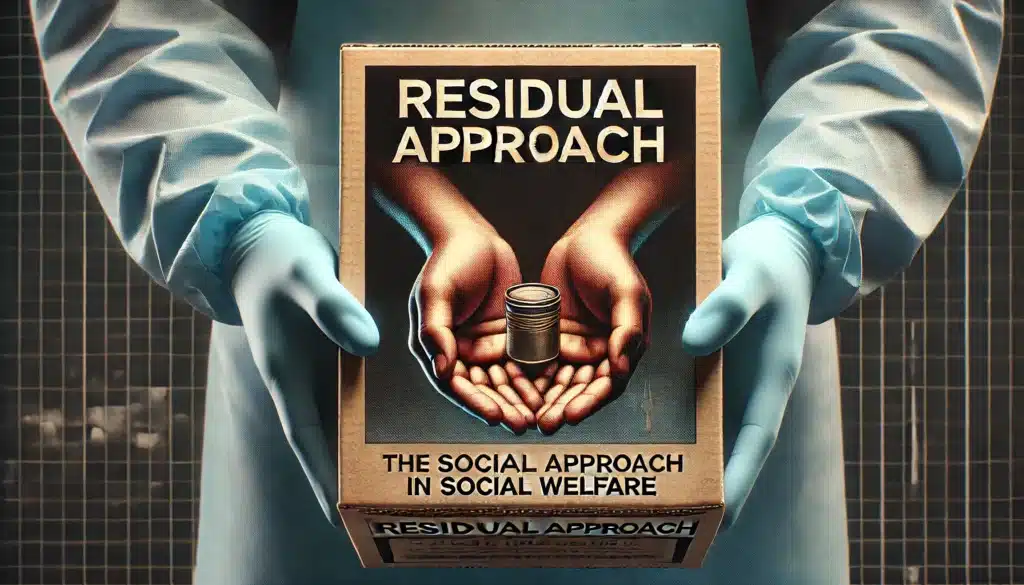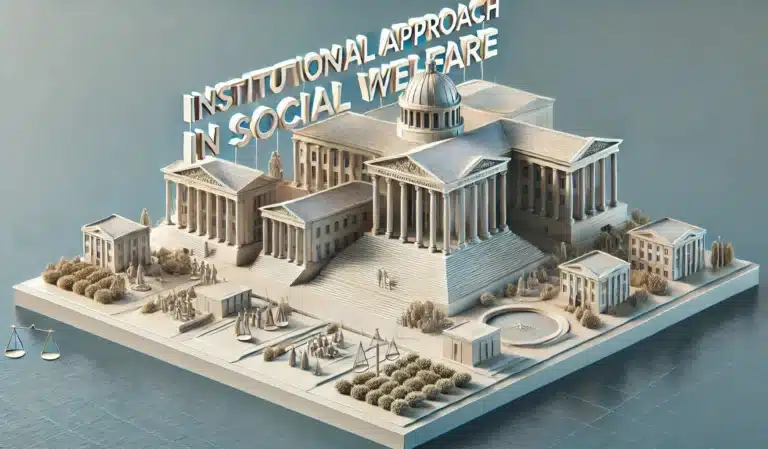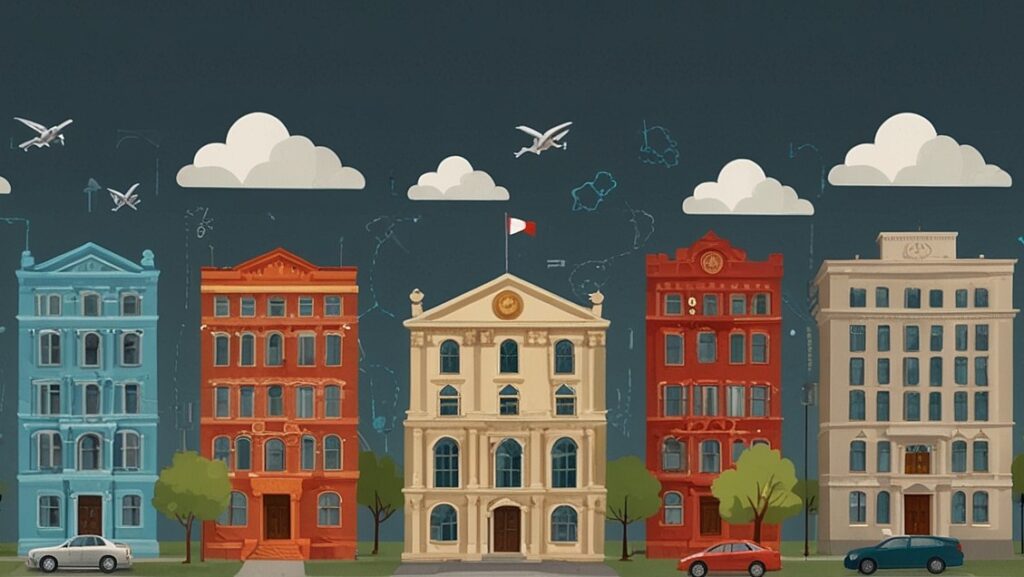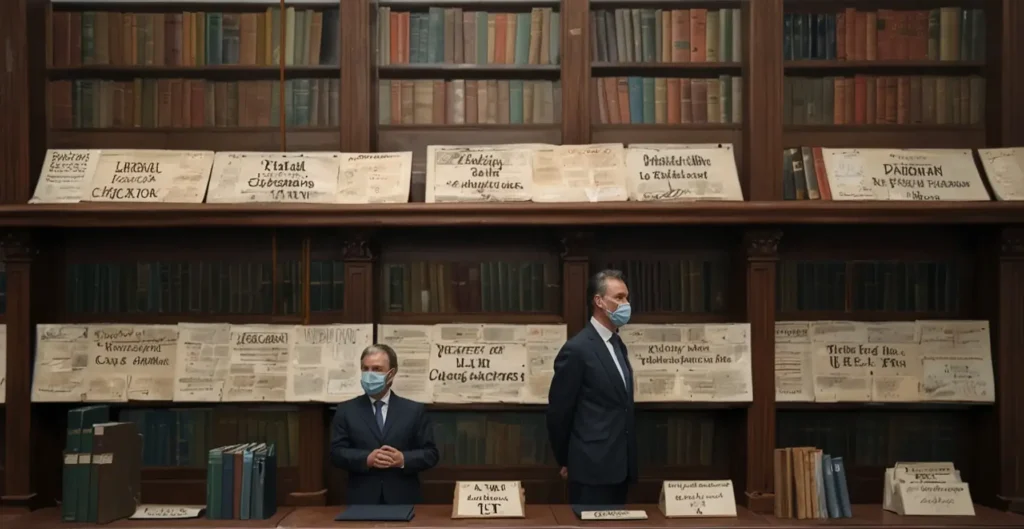The approaches of social welfare outline various forms of responses made by different societies to human requirements and social issues. The three of them are Residual, Institutional and Developmental and each of these approaches explains the planning, delivery and social systems integration of welfare services in order to sustain individuals, and communities.
Residual Approach
The residual concept of social welfare represents the earliest approach to social welfare, emerging from Western nations. The term ‘residual’ refers to what leftovers, often indicating those who are marginalized or excluded from the mainstream. This pertains to the support services available for individuals and communities who are often left out or marginalized.
Due to various external circumstances, these groups may struggle to regulate their daily lives independently and need additional assistance to thrive. This encompasses individuals facing significant challenges, including those who are unemployed, elderly, orphaned children, individuals with chronic illnesses, economically dependent individuals, and those with disabilities, among others.
This approached is known as a gap-filling or first-aid role. The interpretation is that social welfare services must be reserved to cases in which the needs of an individual are not adequately addressed by other institutions of society, which are mostly the family, and the market economy.
The residual perspective suggests that social services and financial assistance should only be considered after all other options and efforts have been exhausted, including the resources available to the individual and their family. Furthermore, this perspective emphasizes that financial assistance and services should to be offered temporarily, particularly in times of crisis. It should be discontinued when the individual or the family regains the ability to support themselves independently.
The residual perspective has often been described as “support for those facing hardships.” Resources and support are often perceived not as their rights but rather as privileges, with the expectation that those who benefit may need to fulfill specific responsibilities; for instance, individuals receiving financial assistance might be asked to engage in certain basic work tasks.

In some theoretical perspectives, the notion of residual approach holds that the causation of presenting problems of the clients lies in the internal dysfunction of the clients, that is, the personal insufficiency or the ill-judged course of action or immoral behaviors. In the residual perspective, individuals often face a stigma when accessing services or financial assistance. An instance of this stigma in American society occurred in 1968 when Senator Thomas Eagleton was removed from the Democratic ticket as the vice presidential candidate after it was revealed that he had previously sought psychiatric counseling.
Institutional Approach
The institutional concept of social welfare is a commonly recognized approach, particularly in developing nations, with significant relevance to contemporary issues. The significance began to grow as the idea of a welfare state emerged, supported by a robust advocacy from democrats in the latter half of the 19th century. This idea emphasizes that contemporary society needs a range of services as essential support to help individuals, groups, and communities navigate the evolving economic and social landscape, ensuring the growth and stability of social institutions.
The institutional perspective supports the view that social welfare programs are a common and inevitable attribute of current-day society. Such programs are not always there when something goes wrong but should always be present within an opportunity to assist individuals in obtaining their best capabilities in life and enhancing their conditions. In this perspective, no stigma is attached to those who seek funds or services; they are only perceived as those who must get the assistance.
What goes hand-in-hand with this perception is the fact that the cause of the problems that an individual is facing has yet to be met with little responsibilities of the individual. For instance, one may not have a job because of the lack of job opportunities. When the individual experiences a problem there are problems identified in the environment (society) and they work to transform the social institutions to which an individual lives.

Political Philosophies: Conservative and Liberal
There are two political philosophies attached to both above mentioned approaches which are the following;
Conservatives
In the analysis conducted in the present discussion, the thought that resists change is considered that of conservative thought which is based on the idea of to conserve. The conservatives relay on the past and believe that social change produces more negative than positive results. Their orientation within the discourse of the economy is that the government should less involved in the functioning of the market to take its natural course.
They advocate for the government to provide support, such as through tax incentives, instead of imposing regulations on businesses and industries within society. A free-market economy is often seen as a means to promote prosperity and meet individual needs effectively. Conservatives often hold onto the belief that minimal government intervention is the most effective approach to governance.
There is a concern that many government actions may pose significant risks to personal freedoms and the effective operation of the free market. Individuals are often seen as self-governing and capable of making their own choices. Poverty and other personal challenges are often perceived as restricting from a lack of motivation, accountability, or self-discipline.
Some individuals hold the view that social welfare programs divert resources from diligent workers to assist those facing challenges due to their own choices. Conservatives typically support a minimalistic approach to social welfare programs.
Liberal
The liberal thinking holds that change in general is a good process, which generally enhances progress. Declarations of moderate policies and institutions are most ideal. The idea of social organization is considered as a place that needs controlling so that heterogeneous interests can engage in an equitable competition. Liberals think that government programs-such as numerous social welfare programs among others are very essential in providing basic human needs.
Their reasoning goes as follows: the government should be involved in correcting social gaps and boosting human well-being and preventing the destructive impulses of uninhibited capitalism. Focus lies on egalitarian (equality for all) principles and right of minorities.
Liberals typically embrace a perspective that emphasizes the role of institutions in social welfare. It is observed that due to the increasing division and complexity of contemporary society, along with the challenges faced by traditional institutions like the family in addressing new human needs, many individuals find it difficult to navigate life without the support of social services.
These services encompass work training, job placement, child care, health care, and counseling, all of which play a crucial role in helping people prosper. Liberals hold the perspective that the personal challenges faced by individuals often due to the factors that are outside of their control. Factors are typically explored within the individual’s surroundings.
For instance, a child with a learning disability may be considered at risk only if they are not receiving the necessary educational services that satisfy to their needs. In this context, there would be a focus on creating educational services tailored to address the unique learning needs of the child. In summary, the ideologies of liberalism and conservatism influence the choices made regarding various welfare strategies.
Developmental Approach

It is based on an alternative approach or developmental view (or perspective) with which Midgley argues that it seems to be agreeable to liberals, people in general and even conservatives. He outlines this method as a systematic process of socially planned change to achieve well-being of the people as a whole with a process of economic development which is dynamic.
Developmental approach to social welfare is concerned with providing in the long term means to address social issues by enhancing the skills of people, their opportunities and living standards. This seems to be a more effective approach than merely offering assistance in case of an emergency since it helps to avoid the issues, as well as to promote economic and social growth. This viewpoint is adopted by those who advocate for the growth and enhancement of essential social welfare initiatives.
This viewpoint is related to the conservatives as it emphasizes that the establishment of specific social welfare programs can lead to beneficial outcomes for the economy. Midgley and Livermore observe that the significance of the developmental perspective on a global scale emerged in the Third World during the decolonization period following World War II.
The United Nations subsequently adopted a developmental approach in its initiatives within developing countries, aiming to enhance social programs. The organization believed that these programs held the potential to uplift the overall economies of these nations facing challenges.
Characteristics of the Developmental Approach
- Developmental economics recommends policy strategy to social programs which together should bring positive impacts on the economic growth.
- It stands in contrast to the residual approach which sees a central role of welfare provision in the hands of the private markets.
- Developmental economics explains that economic advancement is the permit to social development.
- The state plays an active role in designing economic and social policy as well as implementation.
Conclusion
In the contemporary social welfare theory, three main philosophical systems are proposed residual, institutional and developmental that are used to define contrasting ideas of the purpose of welfare within the society. Residual approach envisions welfare as a conditional reactive response, which only comes in to play after inadequacy of available resources are produced, and this form of welfare is often equated with residual stigma.
This normative institutional view of welfare has an institutional image of welfare as an essential service, whose purpose is to provide regularity, free of stigma, to stabilize the societal structure and to foster economic prosperity. The developmental approach, in its turn, puts the concept of welfare in the broader perspective of economic planning by emphasizing mutually supportive relationship between links between economic prosperity and welfare of people.
Taken together, these views show that there is also an ever-evolving thought process with regard to the most effective models that can be used in response to the needs of the society.
MCQs Quiz: Test your Knowledge
- What is the main focus of the residual view of social welfare?
a) Providing long-term support to all citizens
b) Helping people only when other support systems fail
c) Ensuring equal access to resources for all
d) Promoting economic development through social program - According to the residual approach, financial aid should be provided:
a) As a right to all individuals
b) Only in emergencies and for a short time
c) To everyone regardless of economic status
d) Without any conditions or obligations - Which of the following best describes the institutional approach to social welfare?
a) Social welfare programs should be temporary and minimal
b) Social welfare is a normal and necessary part of modern society
c) People should rely only on family and market forces for support
d) Social welfare programs create dependency and should be avoided - Which social welfare approach is considered a “first-line support” to help individuals and communities adapt to changing social and economic conditions?
a) Residual
b) Institutional
c) Developmental
d) Conservative - Which of the following beliefs is associated with conservatives regarding social welfare?
a) The government should play an active role in social programs
b) Social welfare programs should be expanded
c) People should be self-reliant, and aid should be limited
d) Social welfare should be a fundamental right - According to conservatives, what is a major downside of social welfare programs?
a) They help people reach their full potential
b) They take money from hardworking citizens to support others
c) They create job opportunities for underprivileged communities
d) They improve economic development in the long run - Liberals support social welfare programs because they believe:
a) The government should regulate businesses and industries
b) The market economy can solve all social problems
c) Social services create dependency on the government
d) Individuals are always responsible for their own failures - Which approach to social welfare aims to integrate economic and social development?
a) Residual
b) Institutional
c) Developmental
d) Conservative - The developmental approach to social welfare focuses on:
a) Providing financial aid only during crises
b) Improving skills, opportunities, and quality of life
c) Encouraging self-reliance and minimizing government support
d) Giving aid based on individual responsibilities - Which international organization has promoted the developmental approach in Third World countries?
a) World Health Organization (WHO)
b) United Nations (UN)
c) International Monetary Fund (IMF)
d) World Trade Organization (WTO) - Which statement is true about the residual approach?
a) It ensures long-term economic stability for all individuals
b) It removes stigma from receiving financial aid
c) It views social services as a last resort for individuals in need
d) It provides financial assistance as a fundamental right - Which social welfare approach promotes the idea that economic progress is vital for social progress?
a) Institutional
b) Residual
c) Developmental
d) Conservative - The developmental approach gained global recognition during:
a) World War I
b) The Cold War
c) The years of decolonization after World War II
d) The Great Depression - Which approach to social welfare is most likely to be supported by conservatives?
a) Residual
b) Institutional
c) Developmental
d) None of the above - Which of the following is NOT a characteristic of the institutional view?
a) Welfare programs are a normal part of society
b) There is no stigma attached to receiving aid
c) Assistance is provided only during emergencies
d) Problems are often due to factors beyond an individual’s control
Answers:
- b) Helping people only when other support systems fail
- b) Only in emergencies and for a short time
- b) Social welfare is a normal and necessary part of modern society
- b) Institutional
- c) People should be self-reliant, and aid should be limited
- b) They take money from hardworking citizens to support others
- a) The government should regulate businesses and industries
- c) Developmental
- b) Improving skills, opportunities, and quality of life
- b) United Nations (UN)
- c) It views social services as a last resort for individuals in need
- c) Developmental
- c) The years of decolonization after World War II
- a) Residual
- b) Assistance is provided only during emergencies






